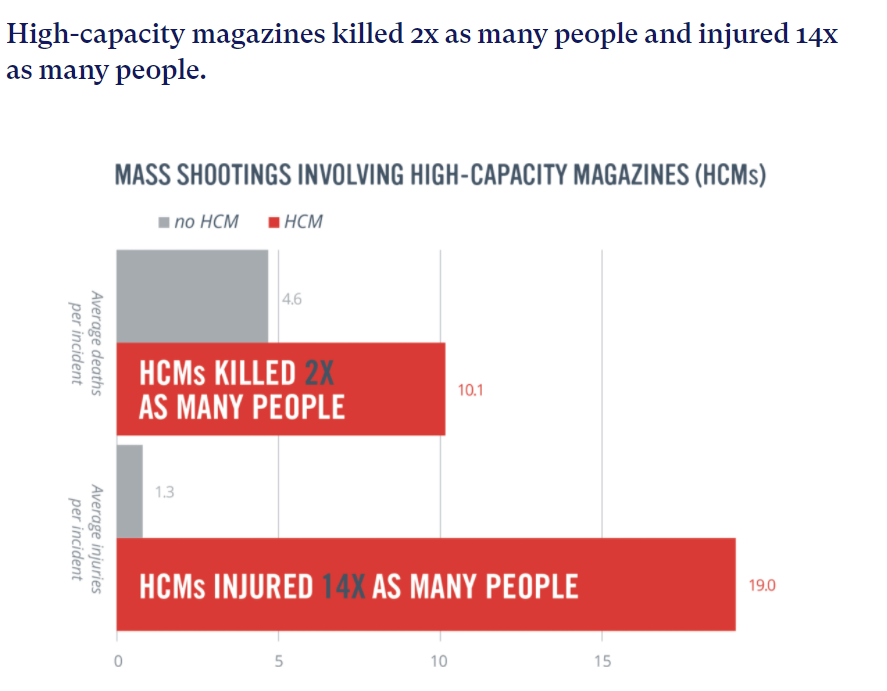Large capacity magazines
- Often used in mass shootings because they allow the shooter to keep firing for longer periods of time, reducing the possibility for victims to escape, or law enforcement to intervene.
- LCMs were used in all 10 of the deadliest mass shootings in the last decade.
- Alarmingly, data suggests that the use of firearms with large capacity magazines in crime has substantially increased since the expiration of the federal assault weapons and large capacity magazine ban in 2004.
Source: Giffords Law Center
- Attacks involving LCMs resulted in a 62% higher mean average death toll.
- Bans on LCMs were associated with both lower incidence of high-fatality mass shooting and lower fatality tolls per incident.
- From 1990 to 2017, the rate of high-fatality mass shootings per capita was 2.3 times higher in states without an LCM ban.
- States that did not ban LCMs also experienced significantly more deaths from high-fatality mass shootings, operationalized as the absolute number of fatalities.
- In mass shootings from 2009 to 2018, 59 percent involved firearms with high-capacity magazines.
- High-capacity magazines can hold as many as 100-rounds, and standard high-capacity magazines hold 30-rounds and can be purchased for as little as $8.
- In mass shootings between 2009 and 2018, events that involved high-capacity magazines had 2x as many deaths and 14x as many injuries.
- Research shows that states with restrictions on magazine size experience mass shootings at less than half the rate of states without restrictions.
- High-capacity magazines lead to 5x as many people shot per mass shooting.
Source: Everytown
High-capacity magazines get new scrutiny as Congress returns
The shooter in the 2017 Las Vegas massacre was able to fire 100 rounds in just 10 seconds—without having to pause and reload—because he used a large capacity magazine, bump stock, and an assault rifle in his attack which killed 50 and injured hundreds.
Source: ABC News
Federal Ban Data (1994-2004)
Changes in US mass shooting deaths associated with the 1994-2004 federal assault weapons ban
- During the 10-year period the federal assault weapons and large capacity magazine ban was in effect, mass shooting fatalities were 70% less likely to occur compared to the periods before and after the ban.
- In a linear regression model controlling for yearly trend, the federal ban period was associated with a statistically significant 9 fewer mass shooting related deaths per 10,000 firearm homicides.
Gun Policy Remains Divisive, But Several Proposals Still Draw Bipartisan Support
- Polling consistently shows that a majority of Americans—nearly 70%—support laws a ban on large capacity magazines.
- Overall, data is changing to be stricter on gun laws than any year in the past with bi-partisan support.
Source: Pew Research
Va. data show drop in criminal firepower during assault gun ban
Last year in Virginia, guns with high-capacity magazines amounted to 22 percent of the weapons recovered and reported by police. In 2004, when the ban expired, the rate had reached a low of 10 percent. By 2010 the percentage was close to 22%.
Source: Washington Post




